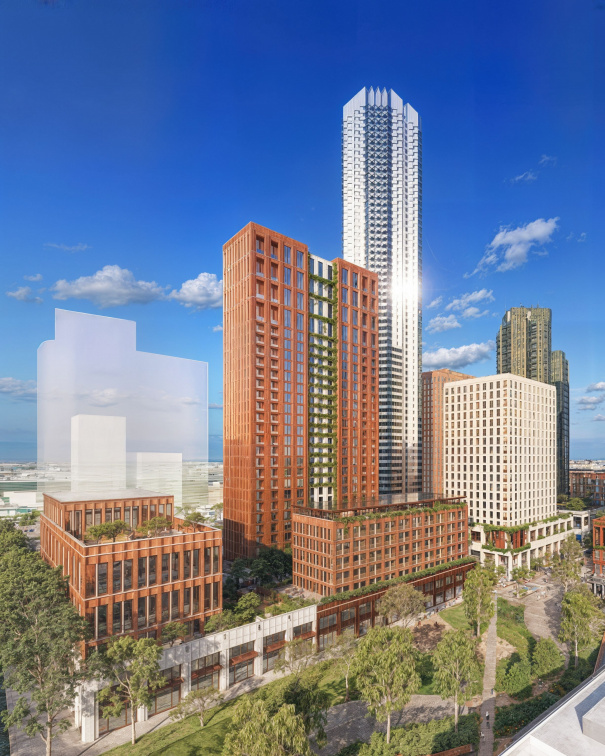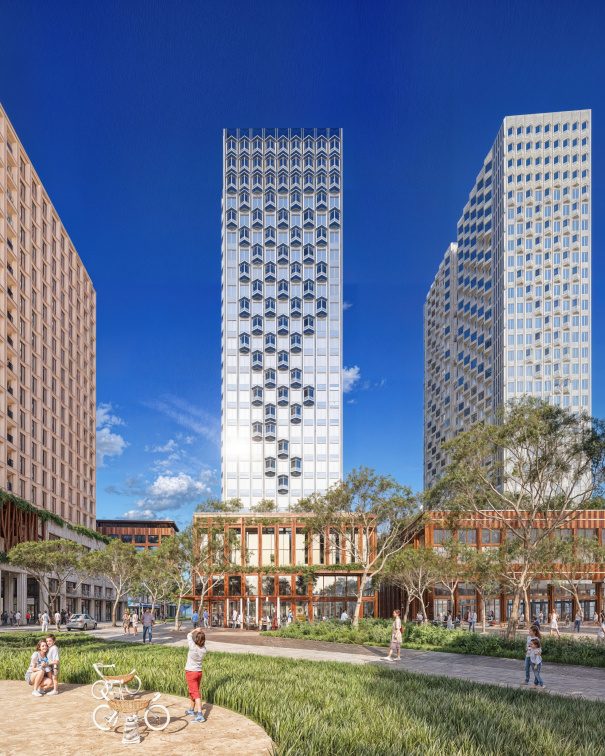HTA is working with Freecity on a masterplan for a key site within the Sydney Olympic Park, some 25 years after the 2000 Olympics. The proposals bring together high-density housing, including a mix of build to rent, student and co-living, affordable and homes for sale. A rich and refined public realm connect the civic spaces around the new Metro station, with greeners, planted public realm. The buildings are designed for volumetric modular construction (VMC) across a variety of towers above ground level podia that provide shops, community and commercial spaces above underground car parking.
Sydney Olympic Park
Our masterplan for a mixed-use town centre development around the new Sydney Olympic Park Metro, will be the largest volumetric modular housing scheme in Australia.
One Place, Many Stories
Architecture
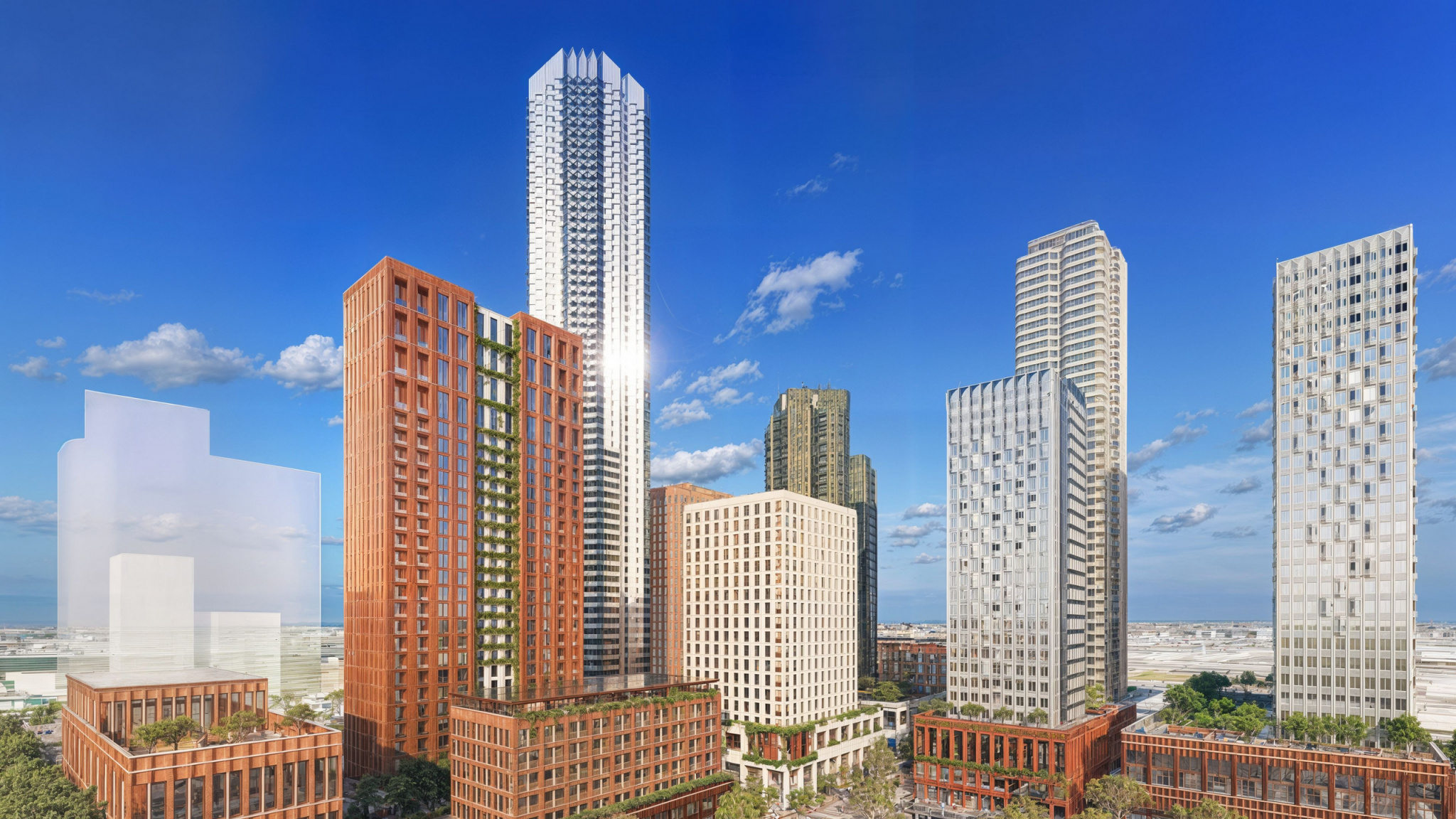
HTA’s architecture strategy applies volumetric design principles to a diverse mix of residential buildings across the masterplan. Each tower and podium is organised around repeatable modular components, standardised structural cores and consistent vertical distribution to support precision manufacturing and efficient delivery.
The tallest building is a 58-storey cylindrical residential tower, designed as a fully modular structure and anticipated to be the tallest of its kind globally. Its circular form reduces wind load and overshadowing. Nine dual-key and studio homes are arranged per floor to optimise internal layouts, daylight and gross floor area.
Across the plots, building typologies are matched to tenure and location. These include co-living (up to 690 homes), build to rent, student accommodation and affordable housing. All homes are designed to receive a minimum of two hours of direct sunlight to primary living areas. Performance has been tested at typical and upper levels. Residential efficiencies range from 78% to over 84% net-to-gross, depending on layout.
Façades draw on mid-century geometric references and are articulated through deep reveals, modular terracotta cladding and reflective glazing. Each building has a distinct identity, unified by a shared modular approach. Podiums accommodate retail, residential lobbies and duplex family homes to animate the street. Back-of-house servicing is integrated within the modular set out and maintained consistently across floors.
Masterplanning & Urban Design

HTA was appointed by Freecity to contribute to early-stage design development across key parcels within the Olympic Park masterplan. Our urban design strategy applies a modular approach to building layout and form, aligning with Freecity’s ambition to deliver high-density housing efficiently across multiple tenures and typologies.
The revised plan establishes a clear block structure centred on the new Metro station, with buildings arranged to define its arrival point and reinforce legibility across the town centre. Shops and homes are placed along the main streets, like Figtree Drive and Station Square, to keep the ground level lively and welcoming. Smaller laneways run between blocks, making it easier to walk through the neighbourhood and allowing more light to reach the shared podium spaces.
The buildings are arranged within a clear framework that balances the need for more housing with a clear and legible layout, human-scale design and good access to daylight. The updated plan provides 16,578m² more residential space than earlier versions while ensuring homes and public areas continue to receive strong sunlight and fresh air. Building heights and setbacks are adjusted to reduce overshadowing of key streets and squares. Streets and building layouts are aligned to preserve views towards the central park, keeping green space closely connected to everyday life.
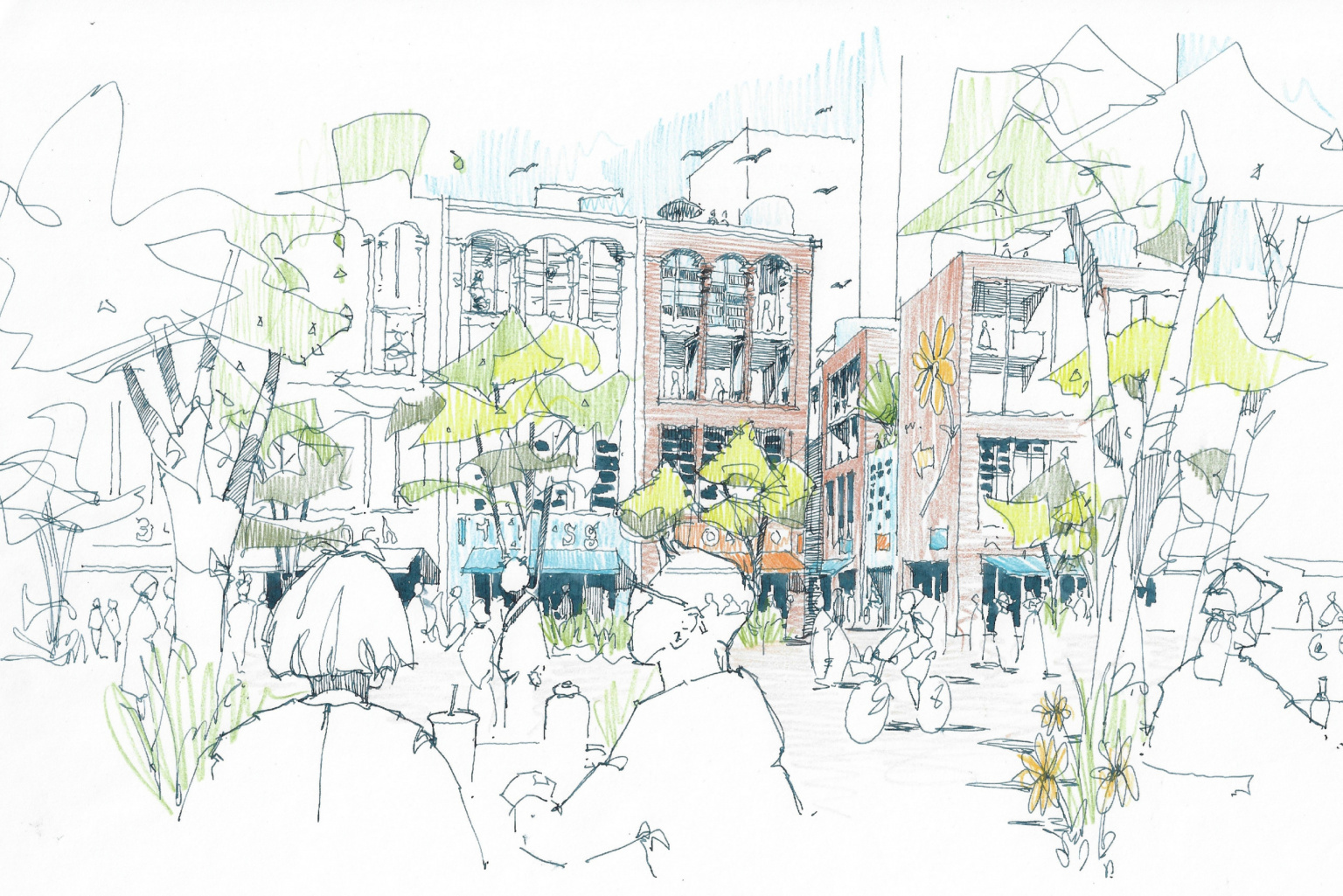
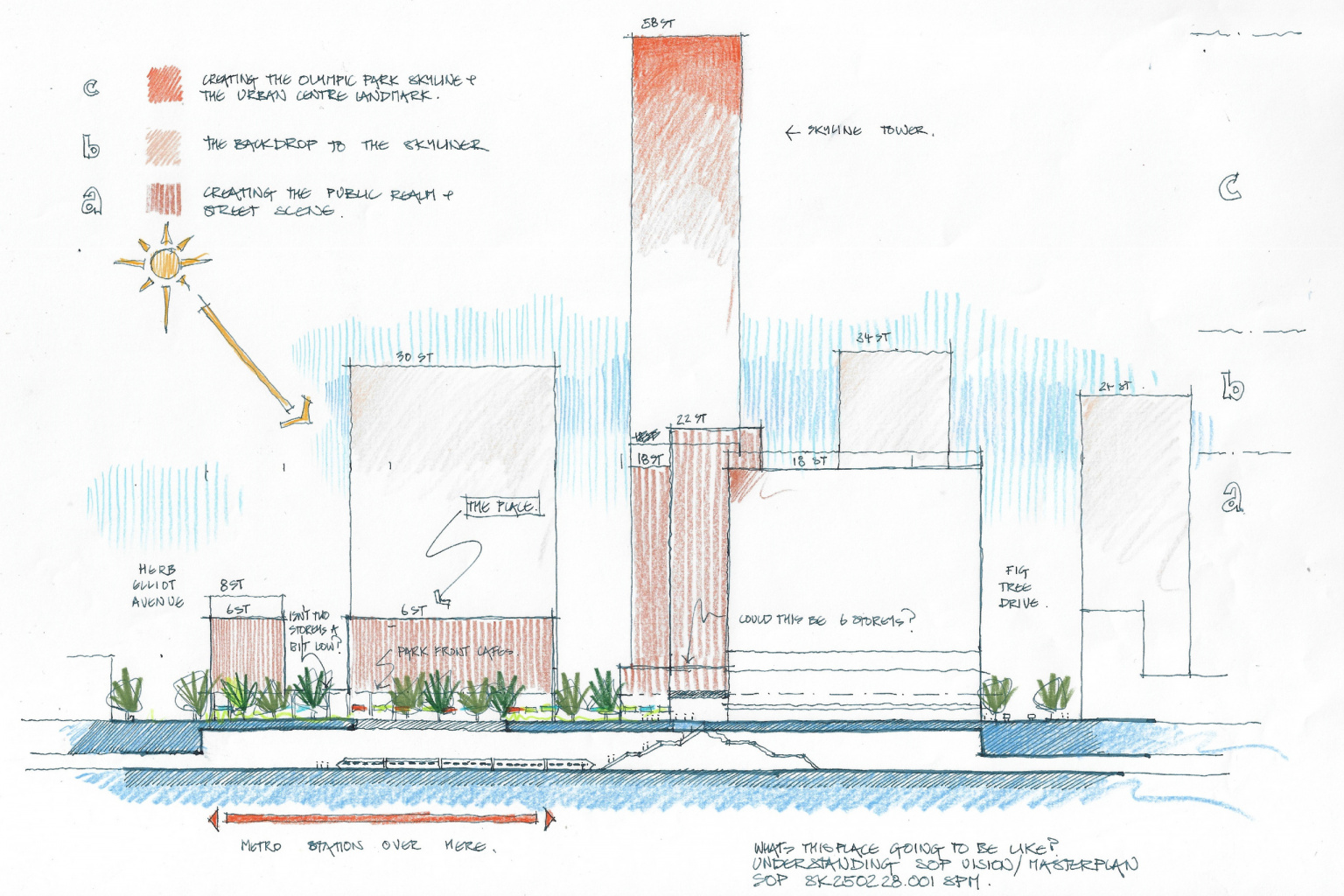
The urban design supports diverse residential typologies including build-to-rent, co-living, student and affordable housing. It ensures consistent floorplate efficiency while accommodating varied core configurations and façade strategies suited to volumetric modular construction. Modular principles are embedded at the masterplan level to enable phased delivery with reduced construction impact.
The proposals create a continuous relationship between the new station development and neighbouring plots, forming a connected network of public spaces, housing and retail that can be easily navigated. The proposals transform Sydney Olympic Park from a precinct designed for temporary events into a permanent mixed-use neighbourhood, structured around new homes, civic spaces and the Metro station.
Landscape Design

The landscape design defines the public edge of the development of the development and connects the new neighbourhood with its transport, civic and residential infrastructure. A series of external spaces support movement, waiting and rest at different scales, from the primary station square to laneways, podium terraces and planted rooftops.
The landscape around the station is designed to handle busy travel periods, with open views and well organised routes that make movement easy and support natural surveillance. Streetscape features such as kerbs, benches and planters follow a modular toolkit, ensuring they can be delivered consistently across Freecity’s sites.
The planting strategy focuses on resilience and environmental performance. Native and adaptive species are chosen to reduce the need for irrigation and to help cool hard-surfaced public areas. Green walls and rooftop planting are integrated into the architecture where suitable. Podium gardens give residents shared outdoor space, while duplex homes at street level have individual front gardens that encourage natural surveillance and bring activity to the street.

